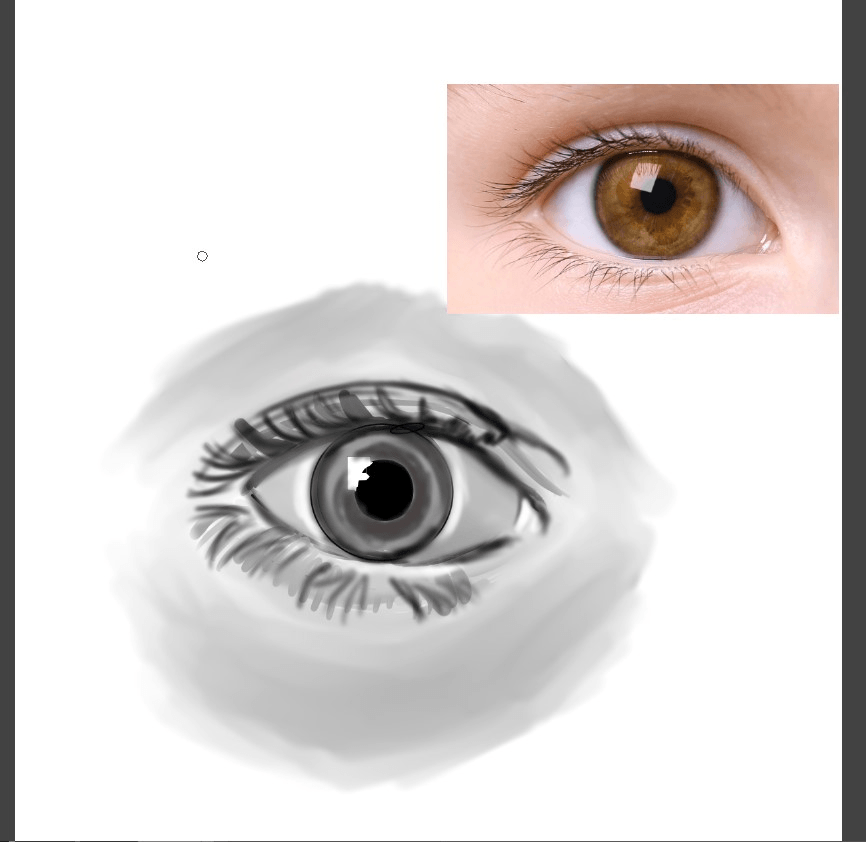CYBERPUNK CHARACTER COMPOSITION
Literature
Cyberpunk is a subgenre of science fiction in a dystopian futuristic setting that tends to focus on a "combination of low-life and high tech" featuring advanced technological and scientific achievements, such as artificial intelligence and cybernetics, juxtaposed with a degree of breakdown or radical change in the social order.
Cyberpunk writers tend to use elements from crime fiction—particularly hardboiled detective fiction and film noir—and postmodernist prose to describe an often nihilistic underground side of an electronic society.
Classic cyberpunk characters were marginalized, alienated loners who lived on the edge of society in generally dystopic futures where daily life was impacted by rapid technological change, an ubiquitous datasphere of computerized information, and invasive modification of the human body.
— Lawrence Person
Layout and camera view
It is anaesthetic to imaginatively pull all your art composition in a focus at the initial stage of your artwork. My style is to plunge the subject in action in a hostile area. So, a low acmera angle is to be used to make the character look superior.
To achieve this, I compose a pose character at shooting stance, a block for facades and a vehicle in a 3d program which conviniently allows me to employ its camera targeting my raw composition at low angle. The essence is to import the raw picture data into clip studio for drafting.
In the CSP program, I open a new illustration file using B5 size and resolution of 350dpi. In the file menu drop - down list, I select Import > Image and further select the image composition taken from the 3d program file.
I adjust the picture approximately to the size of the canvas using the handles at the edges.
Penciling the character
I rasterize the layer picture in order to adjust the opacity. Then I create a new rasterize layer above the picture layer. Using the pencil tool and clicking on the layer color, in addition setting as a draft layer, I draft the character using the picture as a guide.
Inking the character and environment
Next, I turn off the visibility of the picture layer below the pencil layer, but reduce the opacity of the pencil layer. I then, create a vector layer switching to the pen tool picking a black color on the color wheel which I apply on the pencil layer as reference.
Once the inking of the character is complete, I turn off the pencil layer and turn on the picture layer. Still on the inking layer, I trace the vehicle on the picture layer as reference.
For the buildings, I create another vector layer above the inking layer - making sure I turn its visibility off. On the new layer, naming it building, I use the perspective ruler (one point perspective). In the Tools Property, 'Add vanishing point' is selected and 'Change perspective drawing method' is checked. I drag the ruler layer to be below the building layer. Then I repeat the same procedure twice forming my local three point perspective orientating them to match the block in the picture layer.
On the building layer, I use the pen tool to draw the facades and other furniture associated to the environment following a reference picture as to the link below;
Here, the inking is complete.
Coloring the workpiece
To add color to the work, I use the oil paint brush throughout. For the character, I create a seperate file for her top, pants, belt, hair, skin, eyes, face shield, gadget, silver arm, strap, gun, and glove layers putting the file below the character's line art.
I do the same; creating two files for the vehicle and buildings containing their layers below their line arts.
For shadow and highlights, the individual layers are locked using the lock icon to add them in.
Lighting
For lighting, I create a seperate file for the windows of the facades - using the blend tool for reflections, sign posts - using the gausian blur filter, and the character's glove, external biochip and weapon.
Finishing the workpiece
For the lighting to take effect, I create a Fill Layer choosing a dark blue color from the color wheel. I then, place the layer above the character and building color files but below the character and lighting files. I reduce the opacity to give a subtle night time.
For light reflections, on the night time layer, I use the gradient tool and choose a gray color from the color wheel: In the Gradient tool property, I choose the elipse shape then, use the Selection pen tool selecting on the layer where reflection of light fall.
For the character, I select all the color layers then, use the blend tool with a distinct pale color shading part of it.
Now, the workpiece is complete.











Comment